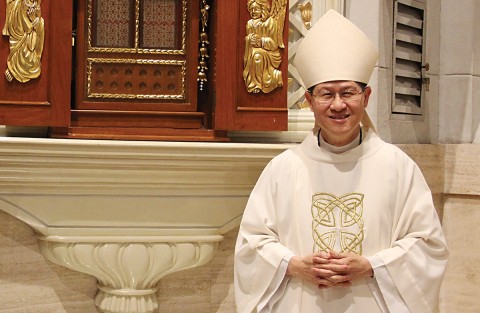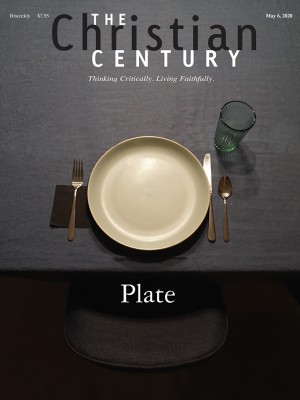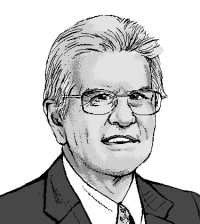Is Filipino cardinal Luis Antonio Tagle really “the Asian Francis”?
The media portrays him as a progressive. It’s not that simple.

Last year, Philippine cardinal Luis Antonio Tagle received a prestigious new appointment as prefect of the Congregation for the Evangelization of Peoples. I admit to a sneaking regret that this congregation of the Roman Curia left behind its original and far more evocative title, the Congregation for the Propagation of the Faith, in the 1960s. Propaganda Fide: in a literal sense, this is the institution that invented propaganda.
Whatever its name, the congregation remains one of the critical institutions within the church, and Cardinal Tagle’s role highlights his vital personal significance within the Vatican under Pope Francis and beyond. Few accounts of the man fail to invoke the description of him as “the Asian Francis.”
Read our latest issue or browse back issues.
Tagle served as archbishop of Manila from 2001 through 2019—a doubly significant appointment. This historic diocese was founded in the 1570s as the cutting edge of Catholic expansion into Asia. It is also the preeminent see in what is already one of the world’s most populous Catholic nations, and that role will grow mightily in coming decades. By 2050, the country could have 120 million Catholics. And unlike in Latin America, the Philippine church faces little serious challenge from newer Protestant rivals.
Tagle gained his rank of cardinal in 2012, at the age of 55—by Vatican standards, strikingly young. Like Pope Francis, he commands huge respect by virtue of his humility, his sense of humor, and—as far as outside observers can judge such a thing—his personal holiness. He is a gifted speaker with a well-tuned sense of how to use mass media.
His role in the Congregation for the Evangelization of Peoples is pivotal, given that body’s role in the Global South, where numbers are expanding even faster than they are declining in Europe. Its declared mission is “the transmission and dissemination of the faith throughout the whole world,” especially beyond its former heartlands. The congregation’s importance is all the greater because of current debates about accommodating church policies and practices to local needs: witness the furious controversies following the recent Amazon Synod, which potentially opened the door to married clergy. Tagle will almost certainly enter the next conclave as a popular candidate for pope, although such a favored status can be a mixed blessing during an actual election.
Like Francis, Tagle has earned praise for his sensitive comments on social issues and his clear concern for the poor and marginalized. He condemns church leaders who speak harshly on LGBTQ questions and favors granting communion, on a case by case basis, to Catholics who have divorced and remarried. In such controversies, he always gives priority to pastoral concerns.
In common media narratives, this puts him at the opposite end of the spectrum from a strict conservative like Guinean cardinal Robert Sarah, who freely uses apocalyptic language to denounce Western social agendas. Sarah terrifies liberals as much as Tagle enchants them. As Global South communities become ever more significant in the Catholic world, it is tempting to present Tagle and Sarah as diametrically opposed faces of the emerging church. When the time eventually comes to select a new pontiff, we can expect to hear a great deal more about that supposed dichotomy, likely painted in the starkest terms of heroes and villains, modernizers and reactionaries—of social justice efforts against moral rigorism.
But a note of caution is in order, and we might recall a recent precedent. Last year’s film The Two Popes deserved all the praise it received for the superb performances of Jonathan Pryce and Anthony Hopkins. But as a portrait of current Vatican attitudes and divisions, it presented a wildly oversimplified contrast between Popes Benedict XVI (supposedly harsh, rigid, and ultraconservative) and Francis I (liberal, flexible, and humane). In reality, the two men were, and are, much more similar than such caricatures would suggest, and they share a common respect for traditional Catholic doctrines, especially in matters of sexuality.
Similarly, what journalists seize on as evidence of Cardinal Tagle’s progressive mind-set must be put in the context of a strong theological conservatism, which reflects his Philippine origins. That church is of course sternly opposed to abortion, but it also treats contraception as thoroughly unacceptable—and Tagle is eloquent in reaffirming those views. Were he a US politician, his views would place him far to the right of any possible mainstream. And like Sarah, he owes his cardinal’s hat to Pope Benedict, rather than to Francis.
Cardinal Tagle should be a major figure in church affairs for decades to come. When discussing him and his attitudes, it pays to avoid the familiar North American labels of liberal and conservative. The Catholic Church always operates on its own particular alignments, which may or may not conform with those of the secular world.
A version of this article appears in the print edition under the title “The Asian Francis?”







